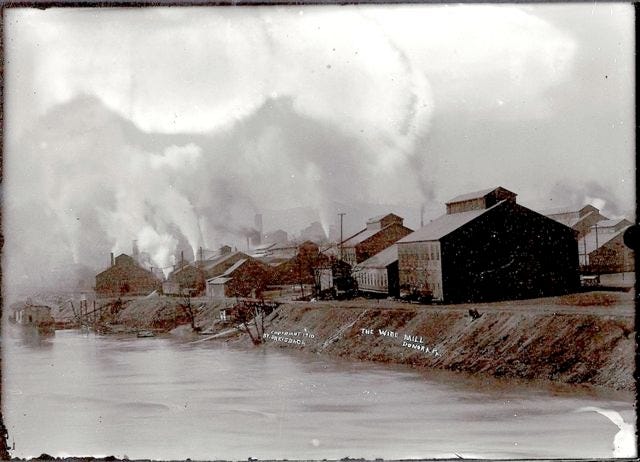With half of all US residents breathing increasingly polluted air, the current administration is cutting critical agencies that research, monitor, and regulate air pollution. Does that foretell another Donora Death Fog?
The American Lung Association’s annual State of the Air report is out, and the news ain’t good. The report indicates that 25 million more Americans than those noted in the previous report are being exposed to high ozone or particulate matter. Almost half the nation now breathes polluted air every day.
Let’s take a quick look at the history of air pollution control in the United States, where the trouble spots are, and what Trump’s rollbacks might cause over the coming years.
A Wee Bit of History
National attention on air pollution didn’t start until after a deadly fog settled over a small mill town south of Pittsburg for six days, killing 21 and sickening thousands. The town, Donora, has since become a rallying cry to greater control of our air quality.
President Harry S. Truman, elected November 2, 1948, just two days after the fog lifted, quickly organized authorized a first-of-its-kind meeting, the United States Technical Conference on Air Pollution.
Truman headlined the conference and extolled the attendees on the dangers of air pollution and the urgent need to learn more about how pollutants affect the body. He said at that meeting:
Air contaminants exact a heavy toil. They destroy growing crops, damage valuable property, and blight our cities and the countryside. In exceptional circumstances, such as those at Donora, Pennsylvania in 1948, they even shorten human life. We need to find out all we can about the relationship between air contaminants and illness.
The act that came out of that meeting, the Air Pollution Control Act of 1955, led directly to the law we know today as the Clean Air Act.
Trouble Spots
For the last few decades several areas have consistently demonstrated high air pollution levels, particularly along the lower Mississippi River, throughout the mid-Atlantic states, and along the entire West Coast.
Top 10–11 most polluted cities for three main pollution categories include:
What the Future Holds
At this writing the Trump administration has canceled climate research programs, fired climate scientists at NOAA and the Department of Agriculture, and deleted climate datasets. It has rolled back many EPA regulations and is looking to eliminate many EPA scientists.
Will these drastic changes lead to another Donora? I think it’s possible, but unlikely. Donora was a kind of perfect storm of a prolonged fog over a steel and zinc factory town located in a steep-walled valley and with owners who didn’t full grasp (or didn’t care to) the dangers of air pollution at the time.
Factories throughout the US have been retooled to reduce the pollutants they spew, and the topography of most high-pollution areas probably won’t allow such a dense concentration of toxins to hang in the environment too long.
But all of those rollbacks and cuts will without question lead to our having less knowledge about our environment, less control of the worst polluters, and a population progressively more endangered from pollutants in the air.
No, the news from the State of the Air report ain’t good. It ain’t good at all.







